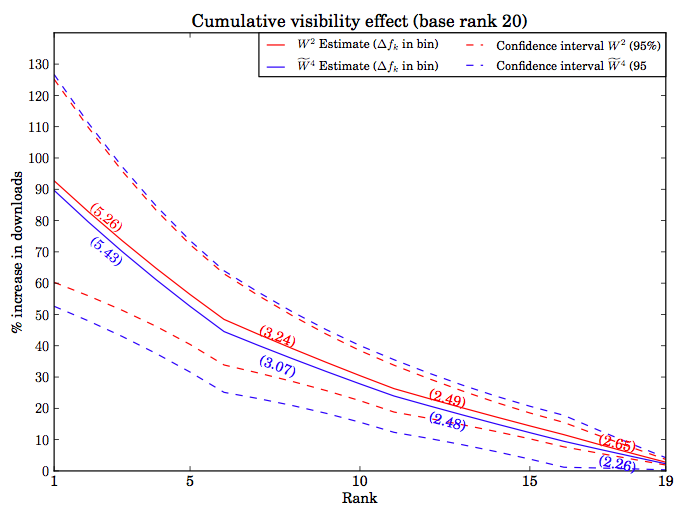
PhotoAtelier, Flickr.
Whether it is sold on the Apple (AAPL +0.07%) App Store, Google (GOOG +1.64%) Play, or another online marketplace, a top ranking often boosts an app's sales. But by how much?
Bar Ifrach and Ramesh Johari, two researchers at Stanford, recently attempted to find an answer. In a paper published on SSRN, the duo examines the relationship between visibility and demand for different apps. A high ranking indicates an app is more popular than others. As Ifrach and Johari explain, though, it also improves sales.
"Ranks are determined by downloads, but also affect downloads," they write.
Digging into the data
In an app market estimated to bring in between $25 billion and $30 billion each year, this issue is important.
Canalys estimates that in the U.S., an astounding half of all app revenue goes to two dozen or so elite developers like Zynga (ZNGA +0.00%), Electronic Arts (EA 0.04%), and Rovio. Often times, these major players have exceptional app-store rankings. Flappy Bird-esque success stories are possible, but only if they achieve placement alongside the industry giants.
So, how much does a top ranking actually boost sales? Ifrach and Johari's findings are intriguing, to say the least. They write:
In particular, we find a significant visibility effect for apps in positions 1-20, but not to apps in positions 21 and forward. Compared with the app in rank position 20, the app in rank position 1 receives about 90% more downloads due to the visibility effect.
In other words, only after an app ranks No. 20 or better does it gain any increased exposure. As illustrated below, the higher the ranking is past this point (on the x-axis), the more sales increase (on the y-axis).

Figure 7, Page 14. "The Impact of Visibility on Demand in the Market for Mobile Apps," Ifrach and Johari.
A ranking of No. 10, for example, generates about 30% more demand for a particular app than if it were outside of the top 20. At a ranking of No. 1, the increased visibility boosts sales by 90%.
Of course, the actual difference in demand between No. 1 and No. 20 could be larger, since past sales directly influence rank. Ifrach and Johari, however, separate these effects. The percentages graphed above measure only how visibility affects downloads.
What does this mean?
This phenomenon could literally mean life or death for app makers. App Promo, for one, estimates almost 60% of iOS developers don't make a profit. Less than 15% of apps ever earn more than $50,000, it adds. Other research from Gartner predicts that by 2018, just 0.01% of apps will be financially successful. Ever-increasing competition is to blame, the company says.
As fellow Fool Jon Quast points out, this may explain why some apps are investing in TV advertising. But there's also a more nefarious effect: rankings fraud. Since opening in 2008, Apple's App Store has battled several high-profile scams, from bot-generated downloads to fake reviews. Google Play has faced similar issues, most recently when it caught Virus Shield lying about its security services in April.
What's next?
The money generated by the world's most popular apps -- Clash of Clans and Candy Crush Saga each make nearly $1 million a day, for example -- indicates the value of a top ranking is, quite literally, worth millions. Given the problems described above, though, it may be time for app stores to reconsider how top apps are ranked.
In a way, Ifrach and Johari's research reveals Apple, Google, and others aren't doing enough to ensure their customers see more than the cream of the crop. Apple alone has more than 1 million apps in its store, many of which are great enough -- quality-wise -- to be a hit. Unfortunately, only a select few will ever make the hallowed top rankings to reach this potential.
While there's no clear-cut fix, a couple ideas are worth considering. First, by rotating top lists more frequently, app stores could improve visibility and give customers more variety. More radically, it also may be worth throwing out standardized rankings altogether. Instead, top app lists could be personalized, depending on user history and genre preferences. This would, theoretically, increase exposure as well.
The bottom line
If these issues aren't addressed, expect to see more fraudulent apps going forward. And most alarmingly, nothing less than the quality of the entire marketplace could be at stake. Consider Gartner's aforementioned forecast: If the day comes when only 0.01% of apps are financially successful, it may mean just 0.01% actually merit use from customers. That's a lot of duds, and it's a future Apple, Google, and other app stores should develop ways to avoid.